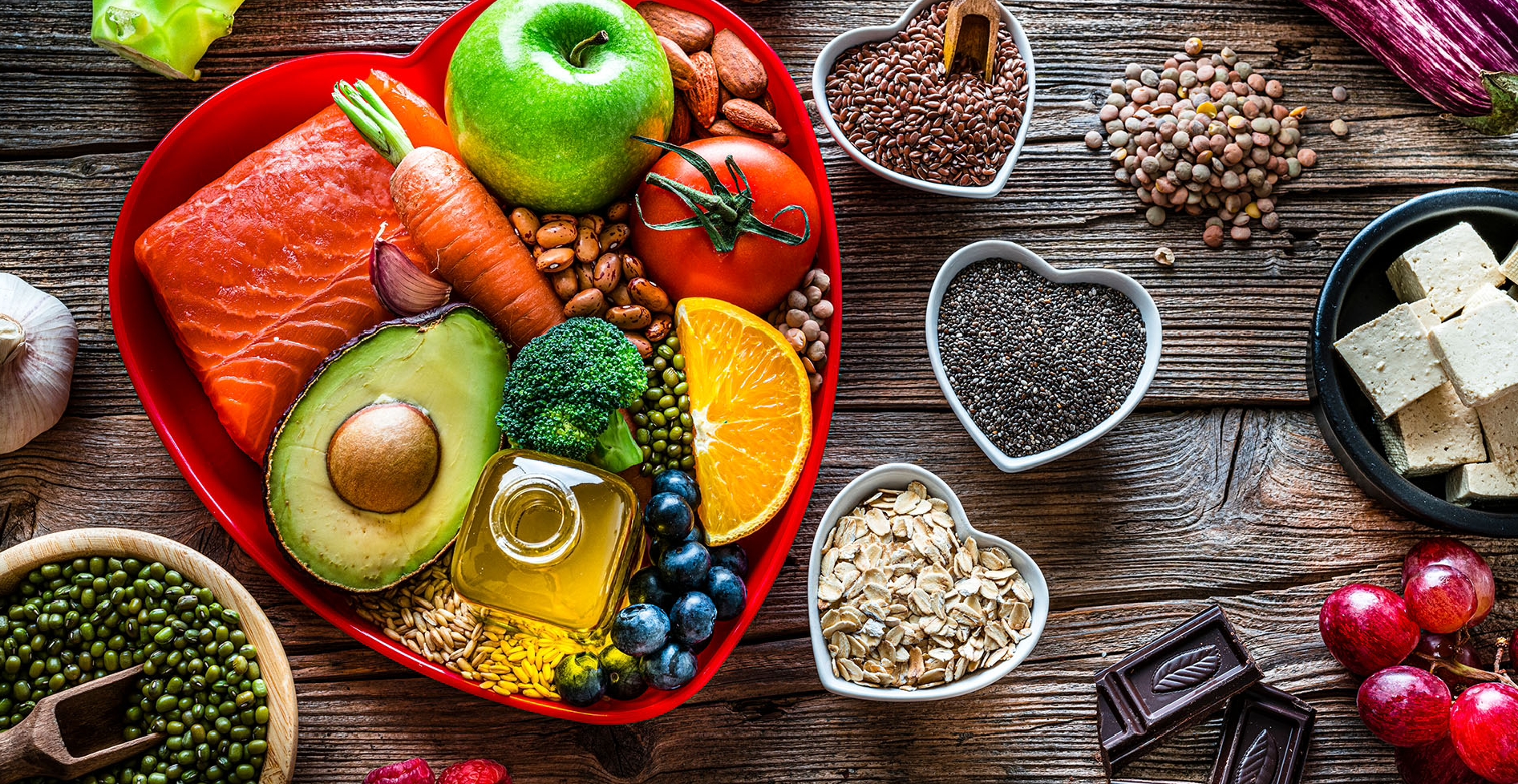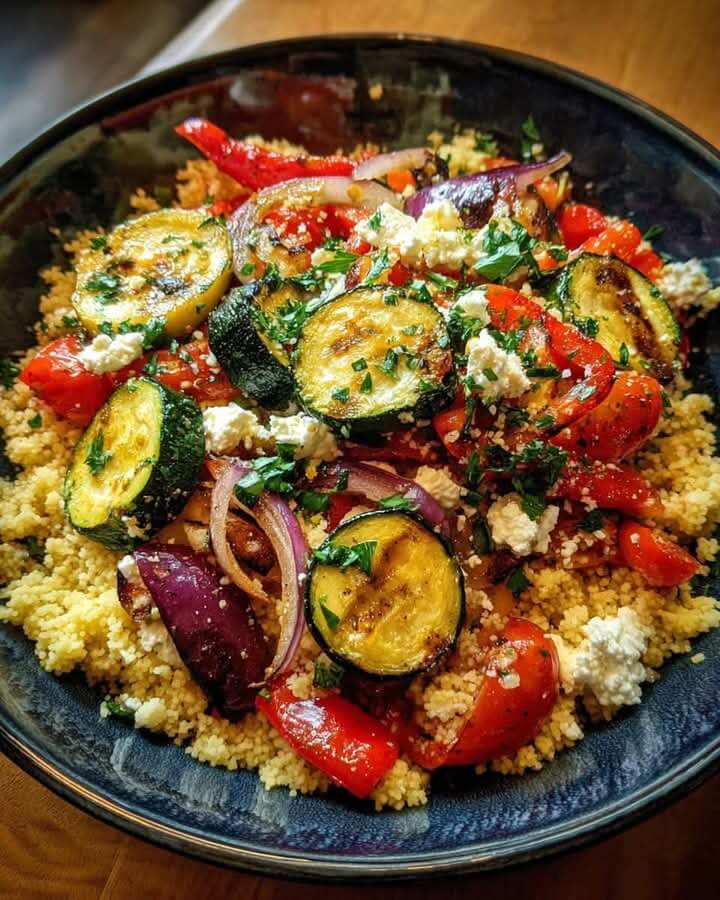Mediterranean Cold Couscous Salad with Roasted Veggies and Feta
This Mediterranean Cold Couscous Salad is a refreshing and wholesome dish bursting with flavor, texture, and color. Perfect for a summer lunch, picnic, or as a vibrant side dish, it features fluffy couscous tossed with caramelized roasted vegetables, salty feta cheese, fresh herbs, and a light lemon-garlic vinaigrette. It’s easy to prepare, highly customizable, and delicious served cold or at room temperature.
Time:
Prep Time: 15 minutes
Cook Time: 25 minutes
Total Time: 40 minutes
Ingredients:
For the Salad:
1 cup couscous (regular or whole wheat)
1 ¼ cups boiling water or vegetable broth
1 small zucchini, diced
1 red bell pepper, diced
1 yellow bell pepper, diced
1 red onion, cut into chunks
1 small eggplant, diced
1 cup cherry tomatoes, halved
1 tablespoon olive oil (for roasting)
Salt and pepper, to taste
½ cup crumbled feta cheese
¼ cup kalamata olives, sliced (optional)
2 tablespoons fresh parsley, chopped
1 tablespoon fresh mint, chopped (optional)
For the Dressing:
3 tablespoons olive oil
2 tablespoons fresh lemon juice
1 teaspoon lemon zest
1 garlic clove, minced
1 teaspoon Dijon mustard
½ teaspoon dried oregano
Salt and pepper, to taste
Instructions:
Roast the Vegetables:
Preheat the oven to 425°F (220°C).
Spread zucchini, peppers, eggplant, onion, and cherry tomatoes on a baking sheet.
Drizzle with 1 tablespoon olive oil, season with salt and pepper, and toss to coat.
Roast for 20–25 minutes or until tender and slightly caramelized. Set aside to cool.
Prepare the Couscous:
Place couscous in a large heatproof bowl.
Pour over 1 ¼ cups boiling water or broth.
Cover tightly with a lid or plate and let sit for 5 minutes.
Fluff with a fork and let cool.
Make the Dressing:
In a small bowl or jar, whisk together olive oil, lemon juice, zest, garlic, mustard, oregano, salt, and pepper.
Assemble the Salad:
In a large bowl, combine cooled couscous and roasted vegetables.
Add feta, olives (if using), parsley, and mint.
Pour the dressing over the salad and toss to combine.
Chill and Serve:
Refrigerate for at least 30 minutes to let the flavors meld (optional, but recommended).
Serve cold or at room temperature. Enjoy!
Tips:
Fluff the Couscous Properly:
After it steams, use a fork to fluff the couscous to avoid clumps and achieve a light, airy texture.
Cool Ingredients Before Mixing:
Let both couscous and roasted veggies cool before assembling the salad to prevent wilting the herbs and melting the feta.
Use Vegetable Broth for More Flavor:
Cooking couscous in broth instead of water adds extra depth and savoriness to the dish.
Roast Veggies Evenly:
Cut vegetables into uniform pieces so they cook at the same rate and develop that perfect caramelized edge
Let It Marinate:
The salad tastes even better after sitting in the fridge for 30–60 minutes, as the dressing soaks into the couscous and vegetables.
Storage Tip:
Store in an airtight container for up to 3 days. Add a fresh squeeze of lemon before serving leftovers to refresh the flavors.
Variations:
Greens Upgrade:
Toss in a handful of baby spinach, arugula, or chopped kale right before serving for extra freshness.
Add Protein:
Mix in canned chickpeas, grilled chicken, shrimp, or even falafel to make it a more substantial meal.
Cheese Swap:
Substitute feta with goat cheese, halloumi (grilled), or mozzarella pearls for a different cheesy vibe.
Grain Alternatives:
Replace couscous with:
Pearl couscous (Israeli couscous) for a chewier texture
Quinoa (gluten-free)
Orzo for a pasta twist
Farro or bulgur for a hearty, nutty flavor
Extra Mediterranean Flair:
Add sun-dried tomatoes, roasted red peppers, toasted pine nuts, or marinated artichoke hearts.
Spice It Up:
Add a pinch of red pepper flakes or drizzle with harissa or chili oil for a kick.
Citrus Twist:
Try using orange or lime juice in the dressing for a different citrus flavor.
Q&A – Frequently Asked Questions
Q: Can I make this salad ahead of time?
A: Yes! In fact, it’s even better after a few hours in the fridge as the flavors develop. Store in an airtight container and chill for up to 3–4 days.
Q: Can I use pearl (Israeli) couscous instead of regular couscous?
A: Yes, but it will require boiling like pasta, not just steeping in hot water. Pearl couscous also gives a slightly chewier texture which is delicious!
Q: Is this salad gluten-free?
A: No, traditional couscous is made from wheat. To make it gluten-free, substitute with quinoa or millet.
Q: Can I skip the feta or make it dairy-free?
A: Absolutely. Either omit the feta or use a plant-based feta alternative. You can also add chopped avocado for creaminess.
Q: Can I roast the veggies ahead of time?
A: Yes. Roast them the day before and store in the fridge. Assemble the salad with dressing and couscous the day you serve.
Q: Is this salad suitable for picnics or potlucks?
A: 100%! It’s a great make-ahead dish that can be served cold or at room temperature, making it ideal for gatherings.
Q: What can I serve this with?
A: Serve alongside grilled chicken, lamb, fish, or falafel. It also pairs well with hummus, pita, and tzatziki for a complete Mediterranean meal.
Nutrition Information (per serving, approx. for 6 servings)
Based on recipe using regular couscous, olive oil, and full amount of feta/olives.
Calories: 290
Protein: 7g
Carbohydrates: 28g
Fiber: 4g
Total Fat: 17g
Saturated Fat: 4g
Cholesterol: 12mg
Sodium: 320mg
Sugar: 6g
Vitamin A: 20% DV
Vitamin C: 80% DV
Calcium: 12% DV
Iron: 10% DV
Nutrition may vary slightly based on ingredient brands, type of couscous, and serving size.
Conclusion
Good nutrition is the cornerstone of a healthy life. It involves eating a variety of foods in the right proportions to provide the body with essential nutrients. Understanding the importance of macronutrients, micronutrients, and hydration helps us make informed dietary choices. By maintaining a balanced diet, we can boost our immune system, prevent chronic diseases, and enjoy better energy and well-being. In short, investing in good nutrition is investing in a better quality of life.

